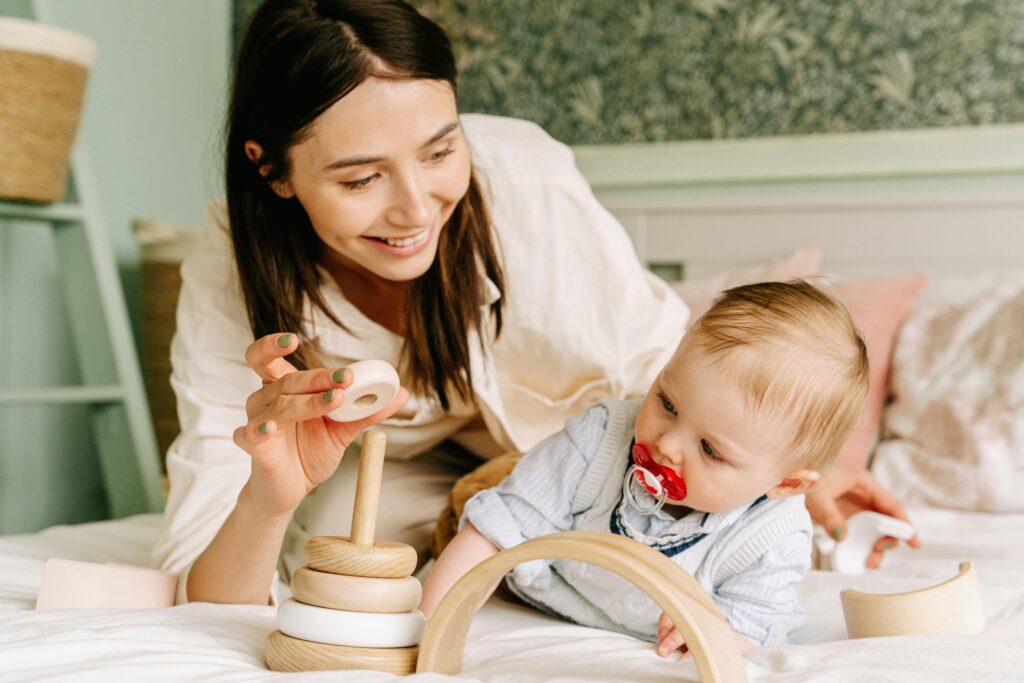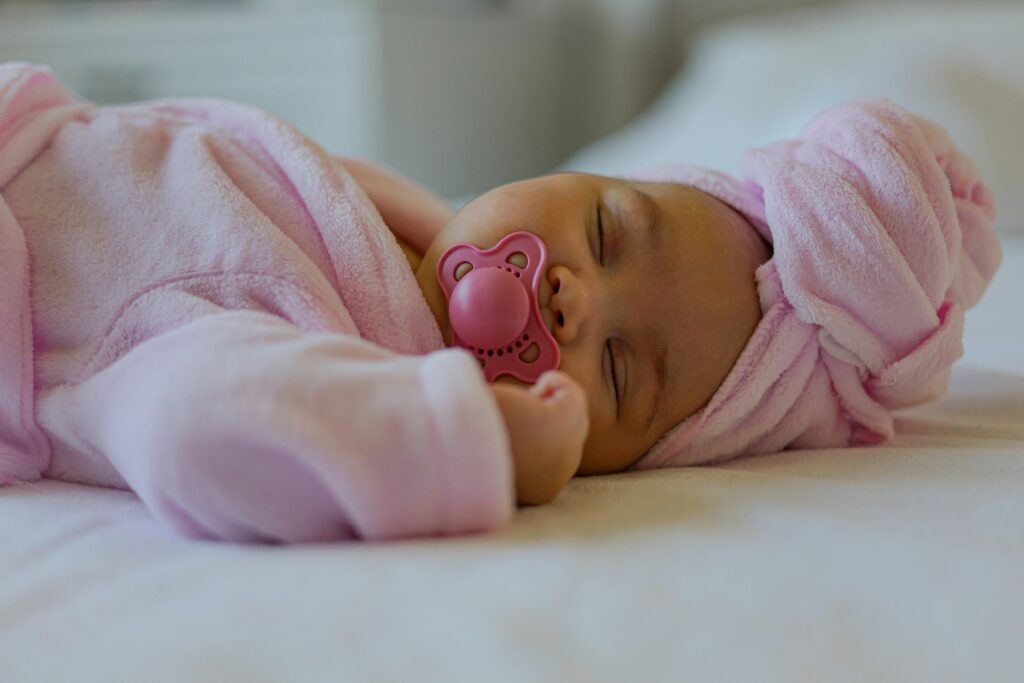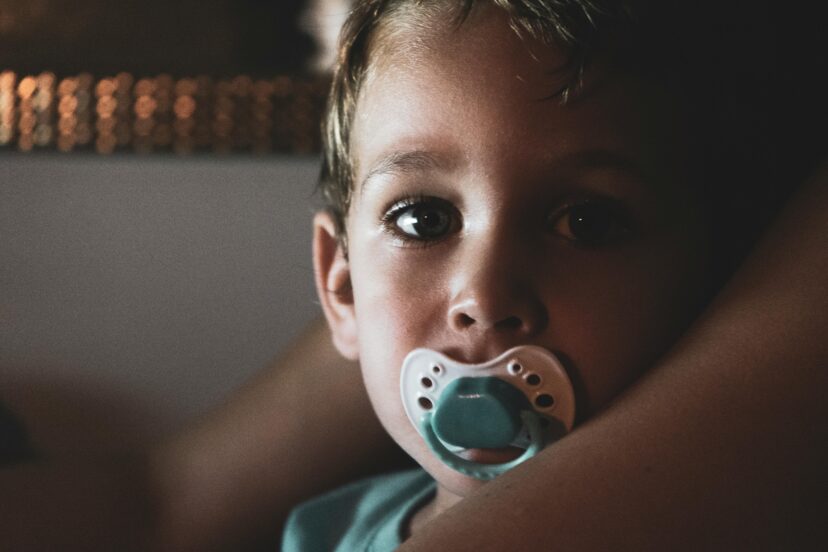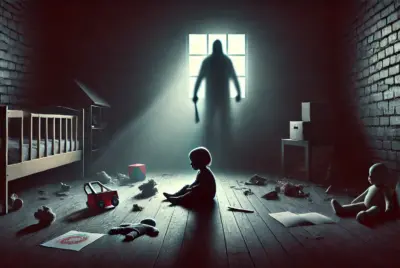How To Get Your Toddler To Give Up The Pacifier
We may earn a commission for purchases made using our links. Please see our disclosure to learn more.
Let’s be real—getting your toddler give up pacifier can feel like an impossible task. It’s their little comfort buddy, the thing that helps them feel safe when the world feels too big. But at some point, it’s time to move on. The good news? You can make this transition smooth and even fun with the right approach.
Why Do Toddlers Get So Attached to Pacifiers?
More than just plastic items, pacifiers provide a toddler with a comforting embrace during trying times. The pacifier is always available to aid, whether they are unhappy, drowsy, or simply need a little additional comfort. Imagine it like your favorite warm blanket or your go-to tune for soothing music. It should come as no surprise that they find giving it up to be very significant. However, it’s crucial to assist children in discovering new calming techniques as they mature.
Signs Your Toddler Is Ready to Give Up the Pacifier
Are you unsure if now is the best moment to begin the process? When your youngster is ready for the adjustment, look for little clues. Perhaps kids don’t ask for the pacifier as frequently throughout the day or only use it at night. It’s also a positive indication if they express interest in imitating older children who don’t use pacifiers. Naturally, it also helps if you feel prepared to make the change as a parent.

Should You Quit Cold Turkey or Go Gradual?
There are two main ways to tackle this: you can either go cold turkey or gradually wean your child off. Cold turkey means taking it away all at once—this works best for kids who adapt well to change. The gradual method, on the other hand, involves reducing their pacifier use little by little. If your child is strongly attached to their binky, going slow might be the easier route. Either way, the key is to stick with your decision and not go back once you start.
What If Your Toddler Refuses to Give It Up?
Some toddlers resist change more than others. If your child is really struggling, it’s okay to take a break and try again later. The goal is to make this a positive experience, not a stressful one. Turning it into a power struggle can make them cling to the pacifier even more. If things aren’t going well, wait a few weeks and then try again with a new approach.
How Long Does It Take to Wean Off the Pacifier?
Every child is different. Some adjust within days, while others take weeks to fully let go. It depends on their personality and how much they relied on the pacifier before. Consistency and patience will make all the difference.
Effective Strategies To Help Your Toddler Give Up The Pacifier
1. Set a Goodbye Date
A countdown can help your child prepare for the change. Pick a date and talk about it like an exciting event—”On Saturday, we say bye-bye to the pacifier!” This way, it doesn’t feel like a sudden loss but something they’ve been expecting. Some parents even make it a mini celebration with a special treat or small gift. The more positive you make it, the smoother it’ll go.
2. Read Books About Giving Up the Pacifier
Books are a great way to introduce new ideas to toddlers. There are plenty of stories about kids who give up their pacifiers and feel proud about it. Reading these can make your child feel like they’re not alone in this journey. Plus, it helps reinforce the idea in a fun and gentle way.
3. Offer a Trade-In
Sometimes, a good old-fashioned swap works wonders. Tell your child they can “trade” their pacifier for a special toy, a stuffed animal, or something they’ve been wanting. This makes it feel less like a loss and more like an upgrade. It’s a simple but effective trick to make the transition exciting rather than scary.
4. Use the “Pacifier Fairy” Trick
Turn it into a magical experience! The “Pacifier Fairy” is like the Tooth Fairy—she collects pacifiers from big kids and leaves behind a surprise. You can put the pacifier under their pillow or in a special box for the fairy to take overnight. The next morning, they wake up to a small gift, making the whole process feel special and rewarding.
5. Gradually Limit Pacifier Use
If your child is very attached to their pacifier, cutting back slowly might be the best approach. Start by allowing it only at nap time and bedtime. Then, once they’re comfortable, limit it to just bedtime. Eventually, you can phase it out completely, making it feel like a natural transition rather than a sudden loss.
6. Cut the Tip of the Pacifier
This is a sneaky but effective trick! Cutting a tiny hole in the tip makes the pacifier less satisfying to suck on. Over time, your child may decide they don’t like it anymore and stop using it on their own. Just be sure to explain that the pacifier is “broken” so they don’t feel like it’s being taken away unfairly.
7. Let Them Decide
Some kids respond well when they feel like they’re in control. Instead of forcing them, ask when they think they’ll be ready to say goodbye to their pacifier. Giving them a sense of ownership over the decision can make them more willing to let go when the time comes.
8. Keep Them Busy
A distracted toddler is a happy toddler! Plan fun activities, play games, and keep their hands and mind engaged. The more entertained they are, the less they’ll think about their pacifier. This works especially well during those fussy moments when they usually reach for it.
9. Offer Extra Cuddles and Comfort
Your child uses their pacifier for comfort, so be ready to step in with extra hugs, snuggles, and reassuring words. Let them know they’re safe and loved even without it. A little extra attention can go a long way in making them feel secure during this transition.
10. Use Positive Reinforcement
Celebrate small victories! If your child goes a whole day without their pacifier, give them praise and maybe a small reward. A sticker chart or special bedtime story can make them feel proud of their progress. Encouragement and excitement can make a big difference in how they handle the change.
11. Make the Pacifier Taste Bad
A little trick that works for some parents is dipping the pacifier in something bitter but safe, like lemon juice. If it doesn’t taste good, your child might naturally decide they don’t want it anymore. Just be sure not to use anything harmful—keeping it safe and gentle is the key.
12. Be Consistent
This is one of the most important parts! If you decide it’s time to get rid of the pacifier, don’t go back on it. Giving in “just this once” will only make it harder the next time. Stay firm, even if there are a few tears at first.
13. Remove All Pacifiers from the House
Out of sight, out of mind! If there’s no pacifier lying around, your child won’t be tempted to use it. Make sure to check diaper bags, under the couch, or anywhere a forgotten pacifier might be hiding.
14. Be Patient and Stay Calm
Let’s be honest—there might be some meltdowns. And that’s okay! Your child is going through a big change, and it’s normal for them to struggle a bit. Stay patient, offer comfort, and remind yourself that this is just a short phase.
15. Lead by Example
Kids love to copy older siblings or other children they admire. If they see that “big kids” don’t use pacifiers, they’ll be more likely to follow along. Point out cousins, friends, or even cartoon characters who don’t need one anymore.

Scientific Insights on Pacifier Weaning and Its Effects
Research has provided valuable insights into the benefits and challenges of pacifier use, as well as effective strategies for weaning. A study titled “A New Technology for Pacifier Weaning: A Thematic Analysis” explores innovative methods to help children transition away from pacifiers while minimizing potential health risks. The study highlights concerns such as dental deformities and sleep disturbances caused by prolonged pacifier use and introduces new techniques to encourage a smoother weaning process. Additionally, a comprehensive review “Recommendations for the Use of Pacifiers” discusses the dual nature of pacifier use—offering comfort and reducing the risk of sudden infant death syndrome (SIDS) while also being associated with early breastfeeding cessation and dental issues. These findings reinforce the importance of a balanced approach to pacifier use and gradual weaning strategies for toddlers.
Recommended Products to Aid Pacifier Weaning
Transitioning your toddler away from pacifier use can be challenging, but several products are designed to facilitate this process:
Frida Baby Silicone Paci Weaning System
This system offers a five-step approach to gradually reduce your child’s pacifier dependence. Each pacifier in the set is designed to be less satisfying to suck on, encouraging your toddler to lose interest over time. It’s both BPA and latex-free, ensuring safety during the weaning process.
Wallow Baby Weaning Serum
Formulated with natural ingredients, this serum is applied to the pacifier to create a taste that discourages use. It’s a gentle method to help reduce pacifier habits without causing distress to your baby.
“Pacifiers Are Not Forever” (Best Behavior Series)
This board book is part of the Best Behavior series and is designed to help toddlers understand and prepare for giving up their pacifier. Through simple language and engaging illustrations, it provides reassurance and encouragement for children during the weaning process.
These products can support a smoother transition as your child moves away from pacifier use.
What If Your Toddler Refuses to Give It Up?
If your child is really struggling, it’s okay to pause and try again later. Some kids just need a little extra time. The key is not to turn it into a battle—forcing it can make them hold on even tighter. If things aren’t going well, take a break and try again in a few weeks.
Final Thoughts
Giving up the pacifier may feel like a big challenge, but with the right approach, it doesn’t have to be stressful. Whether you choose to quit cold turkey or go gradually, staying consistent and positive will help your child make a smooth transition. Before you know it, they’ll be happily pacifier-free, and you’ll wonder why you ever worried about it in the first place.
FAQs
1. Will taking away the pacifier cause sleep problems?
It might for a few nights, but your child will adjust. Offering extra comfort and a solid bedtime routine can help them through it.
2. What if my toddler finds another comfort object?
That’s completely normal. Many kids replace their pacifiers with a stuffed animal, blanket, or another soothing item.
3. Should I stop the pacifier before or after potty training?
It’s best to focus on one transition at a time. If you’re potty training, wait until that’s settled before removing the pacifier.
4. What if my child steals a younger sibling’s pacifier?
Gently remind them that pacifiers are for babies and encourage them by praising their progress as a “big kid.”
5. Is it okay to let my child decide when to stop?
It depends on their age. If they are approaching three years old and still unwilling to give it up, you may need to step in and guide the process.




